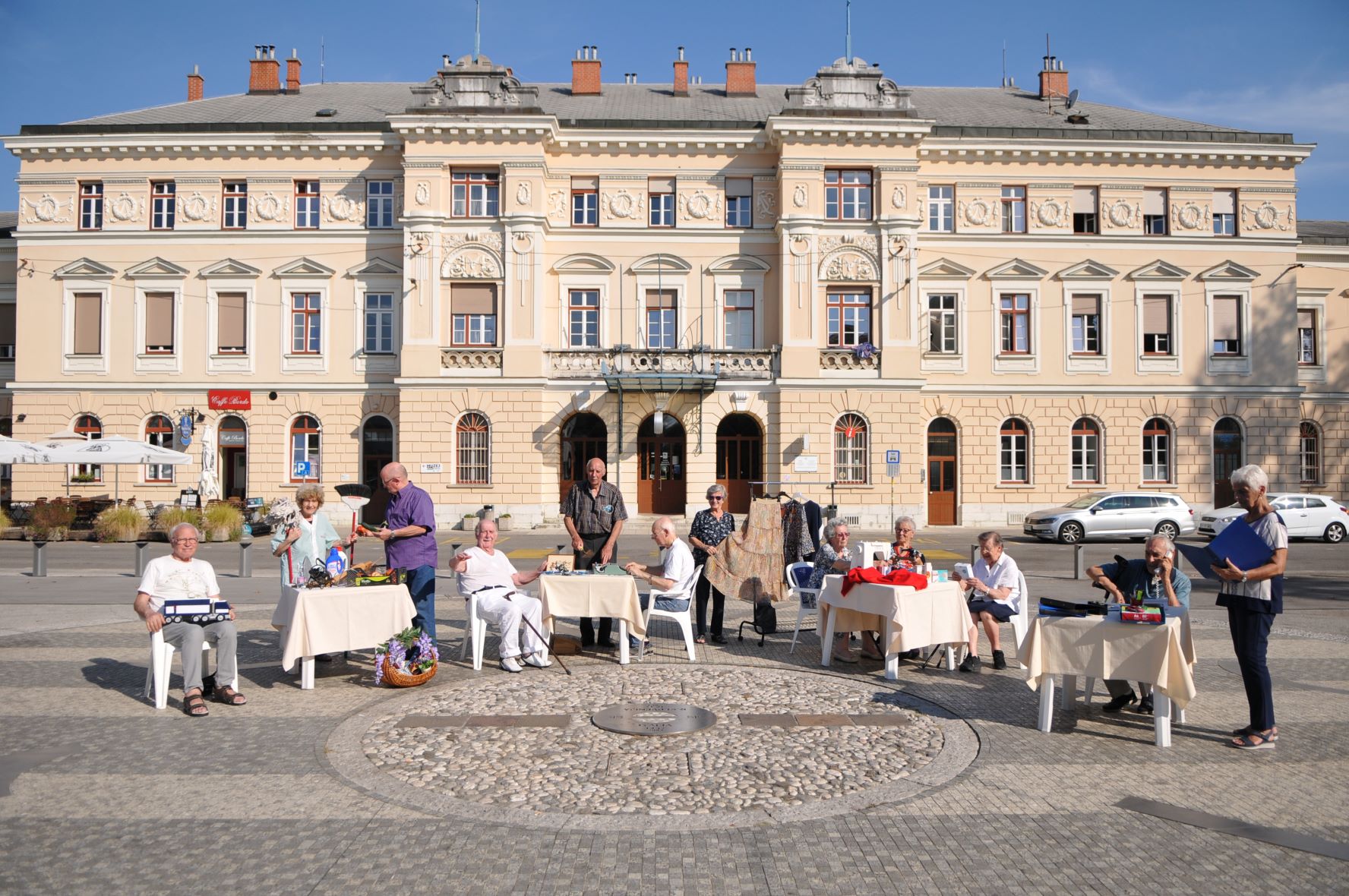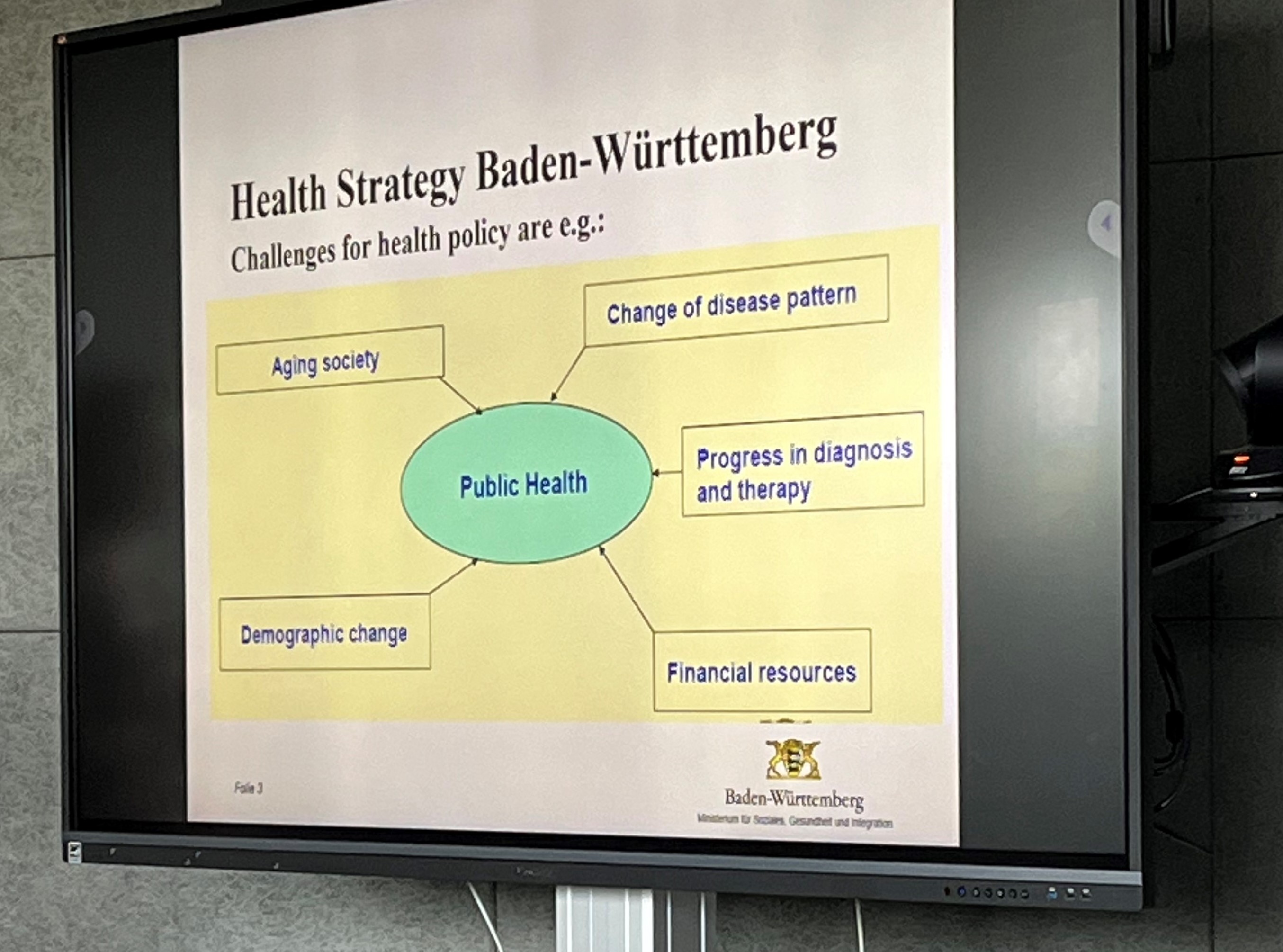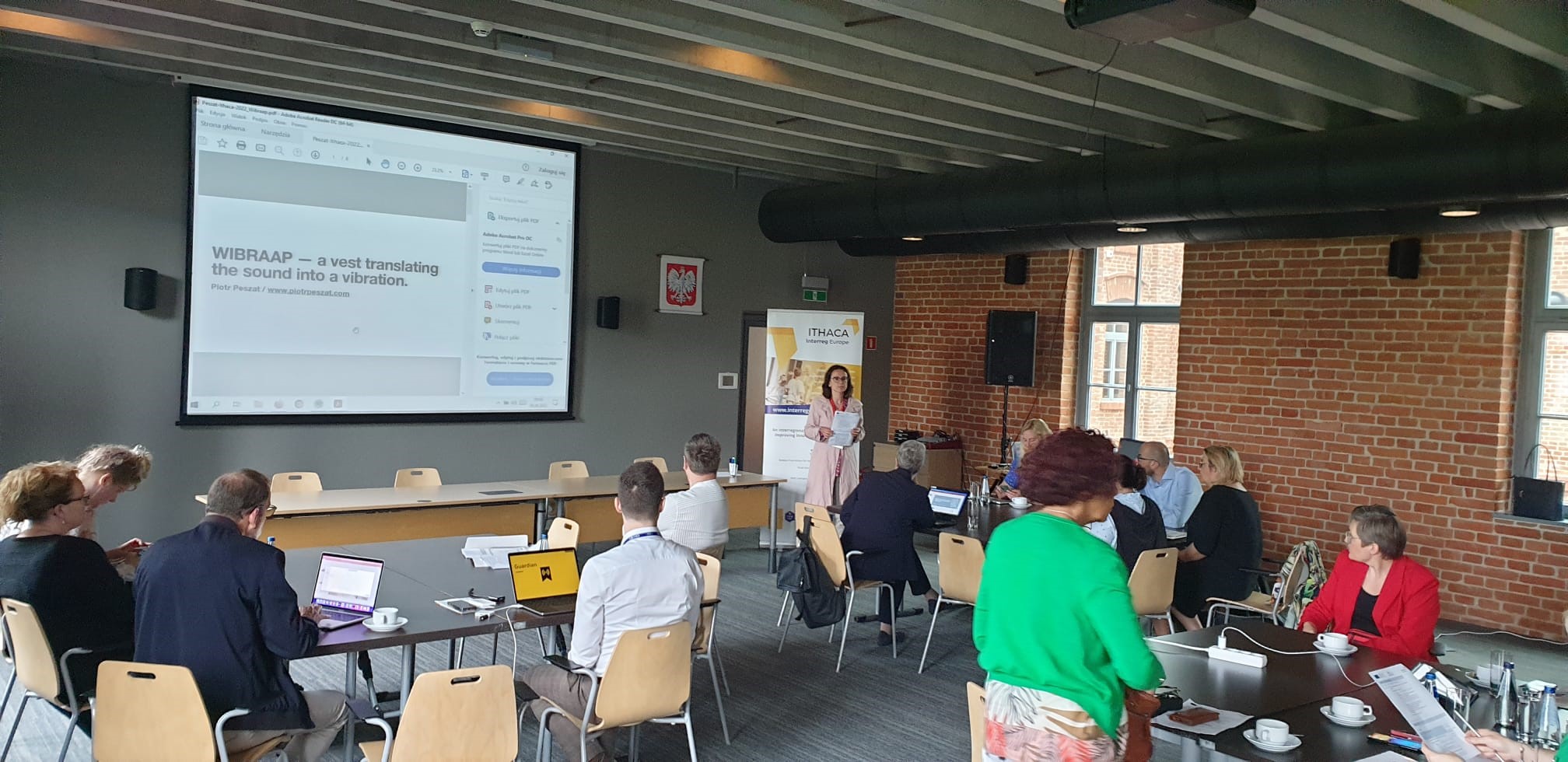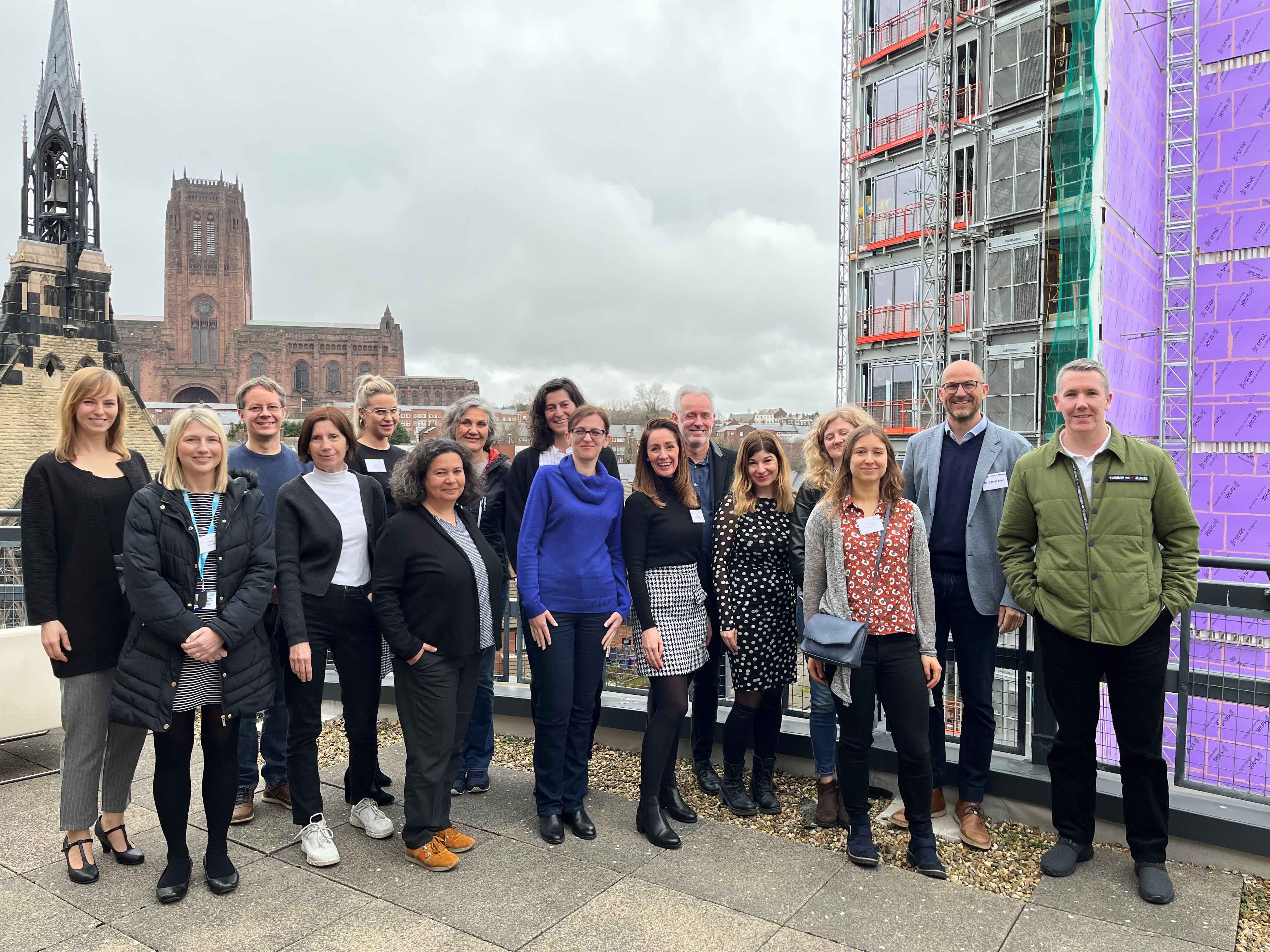
Health and assistance
Health and assistance: stakeholder’s meeting in the Friuli Venezia Giulia Region
Nine regions from the EU share experiences and good practices on smart health and care innovation, to improve active and healthy ageing of the population.
A key aim is to refine regional policies in order to support innovative businesses, create growth and scale up the deployment of innovative health and care solutions.
In the end, the result is smarter healthcare policies and stronger regional and interregional ecosystems for the benefit of European citizens.
As you set out for Ithaca
hope the voyage is (...)
full of adventure, full of discovery.
- C.P. Cavafy
€2,463,198.00
Research and innovation
Aim: To strengthen potential for research and innovation and supporting the shift to a resource-efficient and low carbon economy.
Priorities: Increase research and innovation intensity SMEs and support development and roll out of low-carbon technology.
Impact: Support to and increase of innovative SMEs (including the RIS3 cluster life sciences & Health) more new products and successful business cases.
To be improved: We need a better process for integrated policy development in which the social, economic and spatial domains are involved. We need a more integrated regional policy for sustainable innovation. Only then societal challenges like active and healthy ageing can be tackled better and new innovative business development can be supported. This means the developing public private partnerships for shared risks and initiating multi helix learning ecosystems in which all stakeholders are involved. For the Noord-Brabant's societal challenge 'validation and scaling of smart solutions for active and healthy ageing' the next OP needs to better facilitate the new role of the regional government as a catalyst in the regional learning ecosystem. Also be able to facilitate better the crossovers between clusters and other promising domains.
ReVUS (Regional Growth and Development Strategy) is Region Zealand's SFP action plan for the Regional Operational Programme ERDF.
Objectives for Region Zealand 2015-2018 are:
Five new “super hospitals” are currently under construction in Denmark in each of the five Danish regions. A national partnership has been set up for health and hospital innovation to ensure that the growth potential of the major hospital investments in Denmark is exploited. Integrated health care centres are being set up in the municipalities. Detailed regional objectives for health are described in the Regional Health Agreement, Sundhedsaftale 2015-18.
To be improved: A strengthened Public-Private collaboration, including structured knowledge sharing in Region Zealand will help ensure the development and implementation of smart health innovations, and thus contribute to meet the objectives of the ReVUS in terms of growth and development.
Priorities: University of Ljubljana refers to two investment priorities (IP) under TO 9:
Objectives: Specific objective (SO) of the first mentioned IP is pilot testing of approaches for improved integration of longterm care services. SO of the second IP is to improve the quality of community based services.
To be improved: According to Operational Programme future objective is "to upgrade, redesign or integrate some of these services, and to develop new ones as necessary". While referring to possible future measures for the two IPs, the OP prioritises projects that will include "development of ICT supported services", and projects that will "involve key stakeholders" and "contribute to the exchange of experiences, results and good practice at the regional, national and transnational level", these topics could be much more emphasised.
The policy instrument should focus on development of ecosystems and on interdisciplinary integration; there should be a better mechanism for coordinating activities between government directorates, research organisations, service providers and the industry.
Objectives: The Friuli Venezia Giulia (FVG) ROP ERDF 2014-2020 addresses the themes of eHealth, eCare and active ageing in the priority axis 1, namely “Enhance research, technological development and innovation”, specifically through the objectives:
Priorities: The implementation funding instruments foresees a development priority on “Smart Health” that includes specific topic on AAL domain, eHealth, telemedicine and domotica, to support the regional stakeholders in the implementation of the RIS 3, for the active and healthy ageing and wellbeing.
To be improved: Improvements to the policy should aim at the definition of models and guidelines for a regional ecosystem, more effective connection between regional and national cluster on AAL, strengthen cooperation and synergies among public and private actors involved in the R&D of innovation, improving the participation of the private sector, supporting innovative models for independent living and active and healthy ageing, providing evidence-based solutions for the implementation of the Regional Law on Active and Healthy Ageing.
The policy instrument that links to the ERDF for England 2014-2020 Operational Programme sets out how the cityregion will spend its EU funding allocation. It lays out opportunities for and barriers to growth and sets out priorities to increase GVA, grow the business base, create jobs and help residents into employment.
Priorities: The policy instrument prioritises five portfolios. This includes an innovation economy portfolio that is allocated €26.5 million of ERDF and €5 million of ESF resources. Within this portfolio, key actions include:
Impact: Key outputs relate to enterprises supported, new jobs created, companies involved in research collaboration and private sector finance levered.
An accompanying innovation plan puts more flesh on the focus of activity to deliver outputs and objectives. It has four priority areas. One, on health and wellbeing, incorporates a Smart Health and WellBeing Programme that embraces ecosystem development, living labs, testing grounds and scaling up of smart healthcare solutions.
To be improved: For impact to be maximised in this area, there is a need to ensure that the policy focus and adopted measures effect evidencebased good practices and offer cityregion companies access, for validation and scaling up purposes, to other European regions.
Aim: The Limousin region has included ageing as a transversal theme within its Operational Programme and made it one of the seven specialisation fields of its RIS3. The actions supported within this framework have to bring solutions to R&I, economic development, ICT and intelligent buildings.
Priorities: The improvement pursued is for the implementation of this OP, considering the need of some industries, in terms of support and financing, to help them to ripen their needs in innovation, not only technological.
Impact: The implementation will be made concrete through the Regional Innovation Strategy and the Smart Specialisation. Ex ante conditionality for the validation of the regional OP, the RIS3 is an instrument for the economic development of the Region. It is not an action plan but rather a state of play, with a SWOT analysis.
To be improved: Next step is the implementation of governance. An evaluation of the former Regional Innovation Strategy identified that the “techno push” approach of the regional policy was successful in term of project emergence but not in terms of leading products to the market. It stated that the regional policies need to integrate an approach more centered on the needs of the companies and their clients, as well as territories and their users.
The Region needs to focus on a more specific approach in the field of the Silver Economy to reach this goal. The Regional Innovation Strategy aims to enable the emergence of innovative projects, giving businesses the means to innovate.
The ERDF Operational Programme 2014-2020 of the Basque Country is the document in which the strategy and thematic objectives of intervention are set up in the Basque Country (ACBC), addressing finance activities by the European Regional Development Fund (ERDF) for the programming period 2014-2020, and the financial arrangements set for these objectives.
Aim: The ERDF Operational Programme is completely aligned with the Basque Country government strategy, which has also been analysed in the Basque strategic framework for the management of the funds of the European Common Strategic Framework, putting special emphasis on the defense of employment and economic recovery, prioritising and ensuring social services and health system prestige and quality.
Objectives: The ERDF Programme puts special focus on the thematic objectives addressed to promote the smart specialization strategy in Europe 2020: R+D+I (OT1), TICs (OT2), SMEs (OT3) and Low Economy and Carbon (OT4).
Within the thematic objective 1 (R+D+I), there is an specific mention on boosting the R+D+I on ageing and health by promoting the technological community to fill gap markets on ageing, health and others. Also the Basque Country Smart Specialisation Strategy puts the emphasis and priorities on R+D+I between others in health and bioscience.
To be improved: Creation of new services, products for ageing of the population and health is an explicit objective detailed in thematic objective to improve the competitiveness of the SMEs.
Objectives: The main objective of Priority Axis 9 (“Socially cohesive region”) is to increase intraregional cohesion in social and health benefits. Specific Objective 1 (“Promotion of social inclusion, tackling poverty and all forms of discrimination”) aims inter alia to improve the quality and accessibility of social services, including activation of dependent people, meet their needs in a way that supports their independence and social participation.
To be improved: This may be achieved by providing care and domestic services, rehabilitation services, telecare, counselling and psychological support, organising activities that support the activity of seniors and people with disabilities, as well as ensuring the implementation of local services by these institutions.
The instrument should be improved, because telecare is at the early stages of development and it is implemented within pilot actions. We need to create a system for active and healthy ageing (AHA) and ambient assisted living (AAL).
What is more, in the Regional Operational Programme, interventions are focused mainly on stationary care, day centres, nursing homes and seniors’ centres. We plan to demonstrate that telecare positively influences quality of life and answers the older and disabled people’s needs, especially in the psychological dimension.
The instrument should be improved because an approach to care management system hasn’t been foreseen and there’s lack of solutions how to organise and implement the complex social care system.
Aim: To strengthen potential for research and innovation and supporting the shift to a resource efficient and low carbon economy.
Priorities: Increase research and innovation (especially specific targets 1, 2 and 3 of the Operational Programme (ERDF, Priority A 01 1b) Impact: cluster development, support to, and increase of, innovative SMEs (including the RIS3 clusters), more new products and services.
To be improved: Cluster development is an integral part of the Baden-Württemberg innovation policy, however the dovetailing between technology and services is often missing. A much more integrated policy development is needed in which social, economic and spatial domains are involved. Thus the State Government of Baden-Württemberg is using the OP to foster cross-sectorial exchange between technology providers, component suppliers and service providers.
One important aspect in this initiative is the combination of new technologies with care and health services to implement new breakthrough technical as well as social innovations. This policy instrument, however, could be improved by integrating the demand side into the innovation process in a more effective way – i.e. by using Smart Care Living Labs. This offers a great opportunity for tackling the specific targets 1, 2 and 3 of the Operational Programme (ERDF, Priority A 01 1b) and to strengthen the cluster development in Baden-Württemberg significantly.

Health and assistance: stakeholder’s meeting in the Friuli Venezia Giulia Region

Peer review group assessment and final ITHACA event in Baden-Württemberg 5-7 Jul: A FOCUS ON INTEGRATED CARE.

On June 8-9 a Peer Review Group Assessment meeting took place in Krakow on technical and social innovations.

PP3 has successfully partnered with the Municipality of Medvode in preparing an Age-Friendly Strategy

ONLINE Peer Review Group Assessment event on 'Digitalisation Health and Care during COVID-19' on 7th April 2022!

During the PRGA in Liverpool, delegates from the UK, Germany, Poland and Slovenia, discussed innovations implemented during the Covid-19 Pandemic.

At the PRGA meeting in Liverpool on March 15 and 16, ITHACA partners talk about telehealth. What does the future in telehealth look like after covid?

This case study, conducted by Avance Impact (commissioned by EIB) not only shares practical tips but also makes recommendations on how to increase our impact.

Brabant Outcomes Fund round 2: financing businesses which have a positive impact on people, planet ánd profit and have been unable to secure regular financing.

The application for setting up a trans-county living lab in Baden Württemberg has been approved and this means that the project is qualified to receive funding.